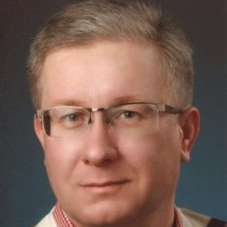Selected Papers from XIV International Conference on Computational Heat, Mass and Momentum Transfer (ICCHMT2023)
A special issue of Energies (ISSN 1996-1073). This special issue belongs to the section "J1: Heat and Mass Transfer".
Deadline for manuscript submissions: closed (31 January 2024) | Viewed by 10612
Special Issue Editors
Interests: power engineering; thermodynamics; heat transfer; inverse heat transfer problems; steam boiler dynamics; thermal stresses
Special Issues, Collections and Topics in MDPI journals
Interests: mathematical modelling and experimental studies of heat exchangers; identification of the actual operating conditions of energy machines and equipment (measurement of temperature, heat flux density, heat transfer and heat transfer coefficients, pollution emissions); nuclear power engineering; heat recovery in power units; possibility of revitalisation of coal-fired power plants; environmental protection in power engineering (technologies for emission reduction to the atmosphere); renewable power engineering (wind and solar energy)
Special Issues, Collections and Topics in MDPI journals
Special Issue Information
Dear Colleagues,
ICCHMT is an international conference series that is widely recognized and respected in the international scientific community. ICCHMT was founded by Professor Abdulmajeed A. Mohamad from University of Calgary, and for nearly 20 years it has taken place in different parts of the world: Magusa, Cyprus (1999); Rio de Janeiro, Brazil (2001); Banff, Canada (2003); Paris, France (2005); Canmore, Canada (2007); Guangzhou, China (2009); Istambul, Turkey (2011 and 2015); Cracow, Poland (2016); Seoul, South Korea (2017); Cracow, Poland (2018); Rome, Italy (2019); Paris, France (2020); Paris, France (2021); and Rhodes island, Greece (2022); In 2023, the Conference will be held in Düsseldorf (Germany). The conference topics dedicated to energy topics are as follows:
- Heat Exchangers/heat pipe;
- Fluid machinery;
- Internal flow and heat transfer;
- Micro/nano heat and mass transfer;
- Mixing devices and phenomena;
- Multi-phase flows;
- Reactive flows and combustion;
- Steam and gas turbines;
- Technology for renewable energy sources;
- Thermal flow visualization;
- Thermal fluid machinery;
- Transport phenomena in porous media;
- Waste management and waste disposal.
Therefore, the manuscripts within these research area are most welcome.
Prof. Dr. Jan Taler
Prof. Dr. Tomasz Sobota
Dr. Monika Rerak
Guest Editors
Manuscript Submission Information
Manuscripts should be submitted online at www.mdpi.com by registering and logging in to this website. Once you are registered, click here to go to the submission form. Manuscripts can be submitted until the deadline. All submissions that pass pre-check are peer-reviewed. Accepted papers will be published continuously in the journal (as soon as accepted) and will be listed together on the special issue website. Research articles, review articles as well as short communications are invited. For planned papers, a title and short abstract (about 250 words) can be sent to the Editorial Office for assessment.
Submitted manuscripts should not have been published previously, nor be under consideration for publication elsewhere (except conference proceedings papers). All manuscripts are thoroughly refereed through a single-blind peer-review process. A guide for authors and other relevant information for submission of manuscripts is available on the Instructions for Authors page. Energies is an international peer-reviewed open access semimonthly journal published by MDPI.
Please visit the Instructions for Authors page before submitting a manuscript. The Article Processing Charge (APC) for publication in this open access journal is 2600 CHF (Swiss Francs). Submitted papers should be well formatted and use good English. Authors may use MDPI's English editing service prior to publication or during author revisions.
Keywords
- energy systems
- energy machinery
- thermal power plants
- thermodynamics
- energy efficiency in buildings
Benefits of Publishing in a Special Issue
- Ease of navigation: Grouping papers by topic helps scholars navigate broad scope journals more efficiently.
- Greater discoverability: Special Issues support the reach and impact of scientific research. Articles in Special Issues are more discoverable and cited more frequently.
- Expansion of research network: Special Issues facilitate connections among authors, fostering scientific collaborations.
- External promotion: Articles in Special Issues are often promoted through the journal's social media, increasing their visibility.
- Reprint: MDPI Books provides the opportunity to republish successful Special Issues in book format, both online and in print.
Further information on MDPI's Special Issue policies can be found here.







